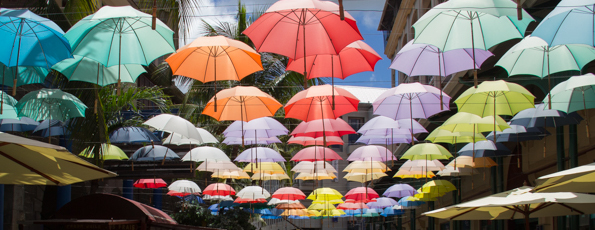
Mauritius in the Indian Ocean is an entrancing mixture of old and new, lagoons and mountains and Africa and Asian. As we journeyed from our base at the Tamassa Resort in the southern part of the island we had glimpses through the tree-lined road of sandy coves penetrating a rocky coastline. This small volcanic island (1,865 square kilometres) was formed around a central plateau and is ringed by coral reefs which have formed shallow lagoons fringed by white coral sandy beaches. None of its mountains are very high but they do offer protection from the strong winds that sometimes batter the island. For this reason the island’s capital and largest port, Port Louis, was built in the lee of the Moka Mountain Range. We entered the capital through the Le Caudan Waterfront a sophisticaed stretch of shops, offices, bars a casino and a luxury hotel.
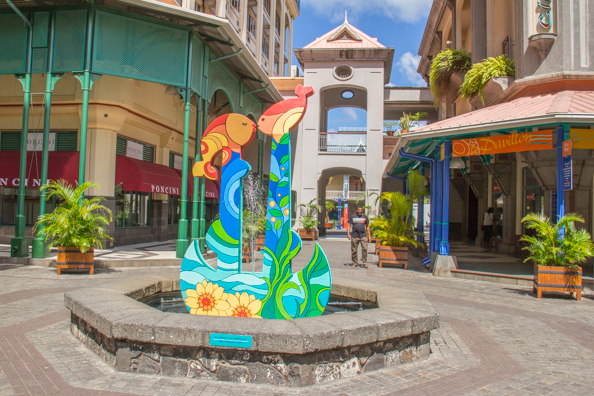
Le Caudan Waterfront was named after a French settler on the island Jean Dominique Michel de Caudan. When he arrived on the island in the eighteenth century it was known as Ile de France. He started a salt pan close to its capital which was then known as Port North West. This saltpan is now known as the Robert Edward Hart Garden not far from Le Caudan Waterfront. Once known as the Pleasure Ground it was a very popular place for the citizens to meet but although the gardens are still maintained by the municipality it’s popularity has waned – no doubt overshadowed by the new waterfront.
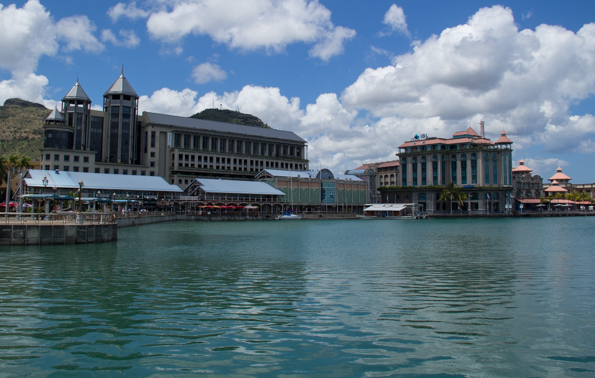
Emerging from the thoroughfare through the Le Caudan Waterfront I could see, across the vast expanse of the port, working cranes spiking the horizon. Strolling along the wide promenade I was surrounded by contemporary high-rise buildings, evidence of the prosperity of this city. On the far side of the harbour I passed the more traditional shopping centre skirted by a row of outdoor cafes which proved too tempting to pass by.

When I left my sheltered spot I plunged into the rush of people and traffic heading into the town centre. Thanks to the construction of a subway the traffic is not a problem pedestrians and I was soon entering the heritage protected hall that houses the Port Louis central market. I was enthralled by the sight of mounds of fresh fruit and vegetables piled high on the stalls either side of me – each appeared to have been individually polished and placed carefully next to its matching companions. The colour, grouping and symmetry was very pleasing to the eye as I strolled amongst the stalls watching the locals haggling with the stall holders as they piled their fresh produce into their bags.
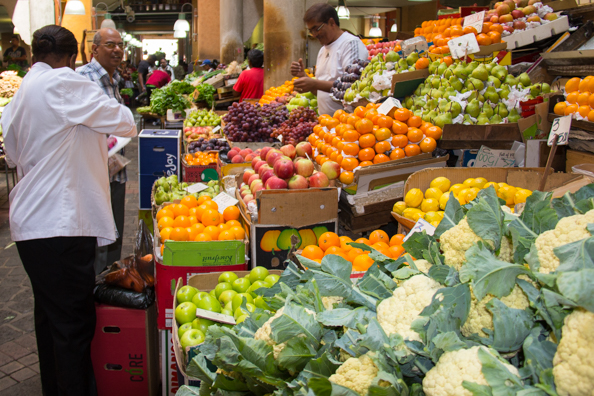
A mezzanine floor stretches above this market and its colourful muddle of handicrafts, clothing and more fridge magnets than you can imagine finding in one place drew me upwards. After threading my way along the narrow corridors exchanging greetings with a cultural mix of stall holders I notices an escalator going up to the top floor. Here I found a huge factory outlet stall, completely empty in contrast to the bustle below me. As I left the building I notice a few stalls in the street outside and they led me into the busy street market that stretched along one of the main shopping streets
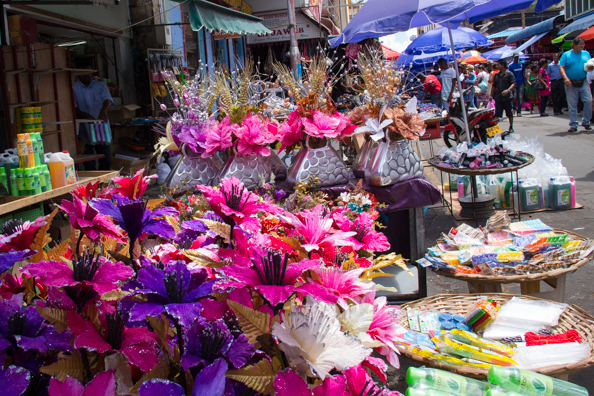
I could have spent the rest of the day exploring but it was time to move on and up as our bus slowly ground its way to the top of Petite Montagne hill and the Citadel, or to give it its formal name, Fort Adelaide. The fort was named after the wife of William II and was built when the British occupied Mauritius during the nineteenth century to give security to the British Army and provide shelter for the woman and children should the island ever be invaded. Never used for its original purpose the fort is now a popular venue for weddings and other events and also a good view point over the city below. From the top of its enclosing wall I could see the Cathedral of Saint Louis the distinctive green and white Jummah Mosque mosque and I had a go at identifying the local trees planted on a hectare of land especially cultivated to grow them. I also had a clear view of the Port Louis race course, the Champ de Mars which is also known as the Hippodrome. Mauritians have a passion for horse-racing and, from June to November, the Champ de Mars (also called the Hippodrome) is crowded with enthusiastic horse racing fans and clients. Originally designed by the French in 1740 for drilling their armed forces the area was converted to a racecourse in 1812. Racing takes place there every Saturday from June to November organized by the Mauritius Turf Club, the second largest Turf Club in the world, and is very popular with both locals and tourists

Our lunch venue was the Restaurant Rêve d’R a forty minute drive from Port Louis and set in a beautiful garden. It was very peaceful relaxing in the shade beside an infinity pool that seemed to merge with the immaculate lawn below us. The meal was delicious, in particular a memorable sea food gratin. Before we left our guide, Arvind, showed us a bread fruit tree and actually managed to convince some members of the group that the fruits were used to make bread! He managed to keep a straight face until we arrived at at our next destination.
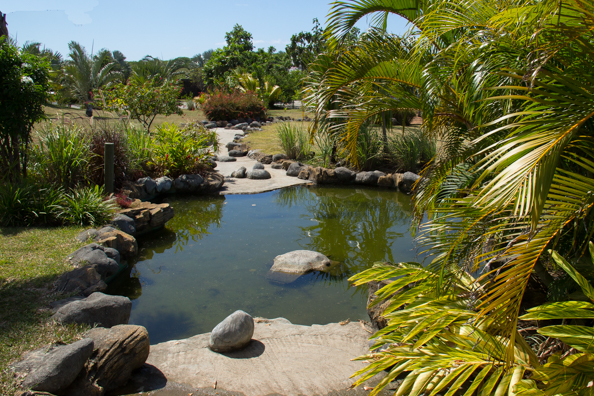
We reached the Pamplemousses Gardens with just enough time to see the highlights before they closed. Formally known as the Sir Seewoosagur Ramgoolam Botanic Garden after the first prime minister of Mauritius after it became independent in 1968 the gardens are more commonly known as the Pamplemousses Gardens – the name of the district in which they are situated. These large gardens are populated by more than 650 varieties of plants including the famous Baobabs, bottle palms, medical plants and a large spice garden. The latter is fenced to stop visitors helping themselves to the spices and in particular the nutmeg. We saw some amazing plants; palms that protected themselves with spines on their bark, the talipot pine that flowers once in its lifetime and then dies; deer, giant tortoises and water fowl around the lake; white and pink lotus blossom. But my favourite was the Victoria Amazonica a giant water lily that has huge leaves and a flower that lasts for just 48 hours during which time it changes colour and sex!

****************************************************************************************
Getting there
I went to Mauritius on a holiday organised by Solos Holidays and we stayed at the fabulous all-inclusive Tamassa Resort. We flew there with Air Mauritius.
This article is now featured on GPSmyCity. To download this article for offline reading or travel directions to the attractions highlighted in this article, go to Walking Tours in Port Louis on GPSmyCity